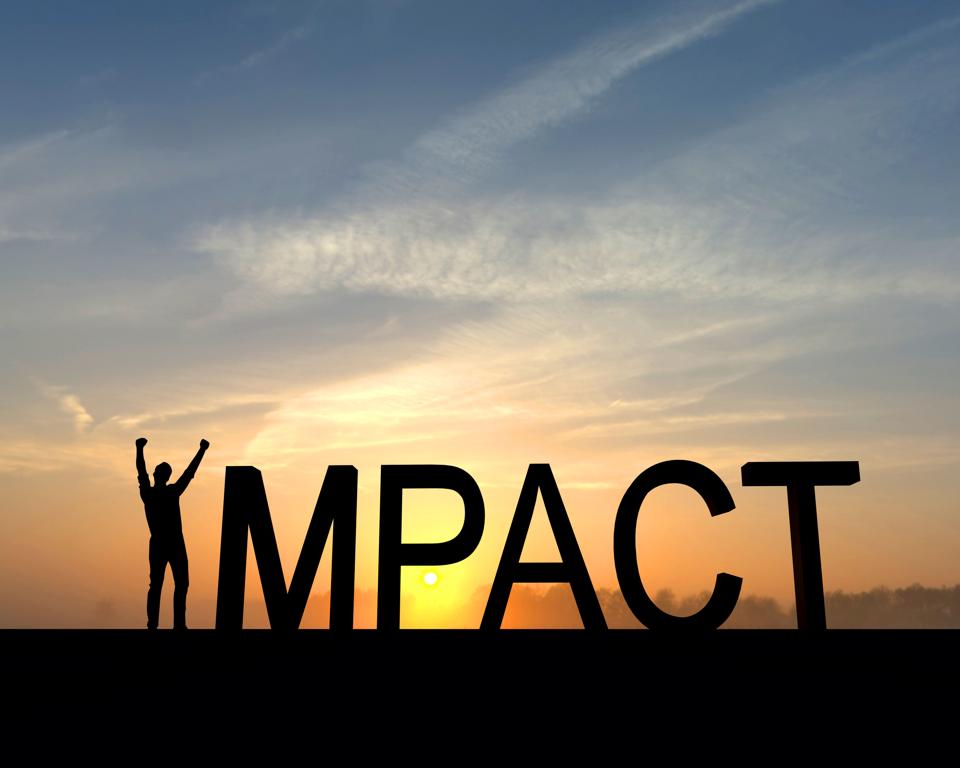Most people get out of bed in the morning wanting to have a positive impact. Yet, it’s easy to get distracted by caregiving responsibilities, never-ending emails or to-do lists. Life intervenes.
Time is a deficit. We don’t spend the time reflecting on what impact we hope to create. With a few simple prompts, our own personal stories reveal clues to what that positive impact might be.
- Reflect on a time in your life when you had a positive impact. What were you doing, who were you with and how did you feel?
- What is something that when you are doing it, you lose track of time?
- What is happening on your best days?
I recommend journaling out your responses encircling key themes—activities, people or experiences—that have had a positive impact. The answers to these questions may reveal an opportunity that has always been present, or uncover an overlooked theme in your life with deeper meaning.
For some, it could be volunteering for causes you care about, spending time with people that you care about, or even endeavoring into business ideas or nonprofit organizations. Turning your personal story into a positive impact starts by asking, “What is your purpose?” “What impact do you hope to create?” and “How will you communicate your purpose?”
What is Your Purpose?
In my interview with Chela Gage, whose background is in corporate HR (human resources) and executive coaching (including a recent role as chief diversity officer at Starbucks), we discussed the launch of her new nonprofit, 1 Million Fosters. Inspired by her own experience growing up in foster care, where she navigated instability and a lack of guidance into adulthood, Gage aims to create a supportive community for adults who have aged out of the foster care system.
Her mission is to empower these individuals through transformative life and career coaching, fostering personal growth, independence and long-term well-being. The name itself reflects the ambitious goal of reaching and impacting a large number of former foster youth, creating a sense of belonging and shared experience akin to a “fraternity or sorority.”
Gage explains that the idea for 1 Million Fosters evolved from a desire to share the powerful stories and resilience of former foster youth. Encouraged by her advisory board and inspired by The Million Person Project, she decided to establish it as a 501(c)(3) to maximize its impact. Gage said, “Despite the challenges of starting a nonprofit, including navigating paperwork and building a board, I leveraged my network and resources to make it happen. I envision creating a strong community where former fosters support each other, offering masterclasses from her network, and becoming a talent database for corporations seeking diverse and resilient employees.” Gage highlights the unique strengths fostered by the experience of being in foster care, such as independence, resilience and adaptability.
What is the Impact You Hope to Create?
Gage drove to connect her personal experience with her professional work to create meaningful impact on a large scale, ultimately leading to the creation of her nonprofit.
“After ending my role at Starbucks, I wanted to really make an impact in the world. At Starbucks, I could impact 430,000 employees. It was like a ripple effect that brought me joy. I wanted to launch something that I felt personally connected to and qualified,” Gage said.
One impact of Gage’s 1 Million Fosters is storytelling. One of her former fosters, Eric Kellum, wrote a poem about his experience through grief, serving as an inspiration for others.
How Will You Communicate Your Purpose?
With a strong desire to build a supportive community and facilitate positive change in the lives of former foster youth, Gage shows how her personal story of resilience can turn into a positive impact.
“My purpose is to build a strong community for former foster youth by offering coaching and guidance and connecting them, helping them navigate adulthood and live their fullest potential. I want us all to opt in and for us to be a community that supports each other. I want to connect them by being the bridge that helps people get from where they are to where they want to be.”
Want to have a purposeful impact? Start by asking, “What is your purpose?” “What impact do you hope to create?” and “How will you communicate your purpose?”

